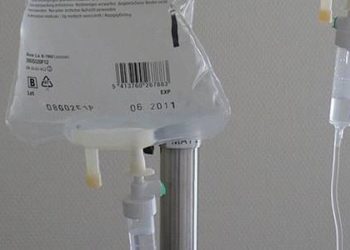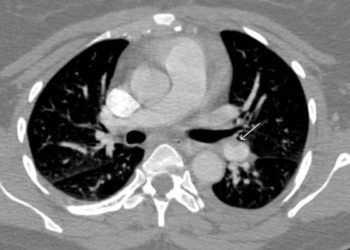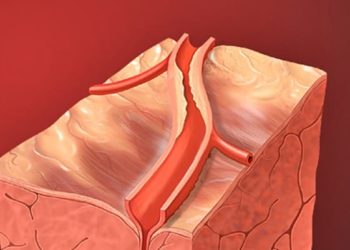Computer more accurate than clinical gestalt in predicting ACS
Image: PD
1. In a low-risk population, a computerized attribute matching program predicted acute coronary syndrome (ACS) but not ;ulmonary embolism (PE) more accurately than clinical gestalt.
2. Clinical gestalt significantly overestimated the likelihood of ACS, with a mean pretest probability estimate of 17% when the true rate in the study population was 2.7%.
Evidence Rating Level: 2 (Good)
Study Rundown: In this study, a validated, computer-derived technique performed better than clinical gestalt in diagnosing acute coronary syndrome but not pulmonary embolism. These findings are consistent with other studies comparing diagnostic accuracy of clinical gestalt and logistic regression-based models for cardiopulmonary diagnoses. The lower accuracy for ACS was heavily influenced by its low specificity (ie high rate of testing patients without disease), which may be driven by the threat of litigation. More accurate methods of predicting likelihood of ACS and PE could significantly reduce the medical costs associated with extensive diagnostic work-up’s.
Click to read the study in Annals of Emergency Medicine
Relevant Reading: Clinical decision rules for excluding pulmonary embolism: a meta-analysis
In-Depth [prospective cohort study]: This study compared computerized attribute matching with clinical gestalt in estimating pretest probability of acute coronary syndrome and pulmonary embolism. Participants included adult patients with dyspnea and chest pain from four emergency departments (three academic and one community). Pretest probabilities for both ACS and PE were derived from clinical gestalt and from attribute matching. The latter is a computer program that compares a patients’ profile of clinical predictors as entered by the clinician with large databases of patients with identical profiles, and derives a percentage probability. Patients were followed for outcomes (ACS or PE confirmed by labs or imaging) at 90 days through telephone questionnaires and a review of the hospital’s EMR. 840 patients were enrolled and evaluated by emergency physicians, third year residents, or physician assistants; of these, 23 were diagnosed with ACS and 15 with PE. In comparing pretest probabilities by area under the receiver operating characteristic curves, clinical gestalt compared favorably with the computer program for PE but was less accurate for ACS. Clinical gestalt resulted in higher estimates of likelihood ACS (17% vs 4%) and PE (12% vs 6%) in a relatively low-risk population (2.7% acute coronary syndrome; 1.8% pulmonary embolism).
By Elizabeth Kersten and Andrew Bishara
More from this author: Outreach increases colorectal cancer screening among underserved; Clinical impression not reliable in identifying drug-seeking behavior; Industry influences on expert panels contribute to over-diagnosis; Undervaccination becoming more common, associated with increased patient admission rates; Overuse of colonoscopy widespread in the US; Silent myocardial infarctions more common than previously assumed
© 2013 2minutemedicine.com. All rights reserved. No works may be reproduced without expressed written consent from 2minutemedicine.com. Disclaimer: We present factual information directly from peer reviewed medical journals. No post should be construed as medical advice and is not intended as such by the authors, editors, staff or by 2minutemedicine.com. PLEASE SEE A HEALTHCARE PROVIDER IN YOUR AREA IF YOU SEEK MEDICAL ADVICE OF ANY SORT.







